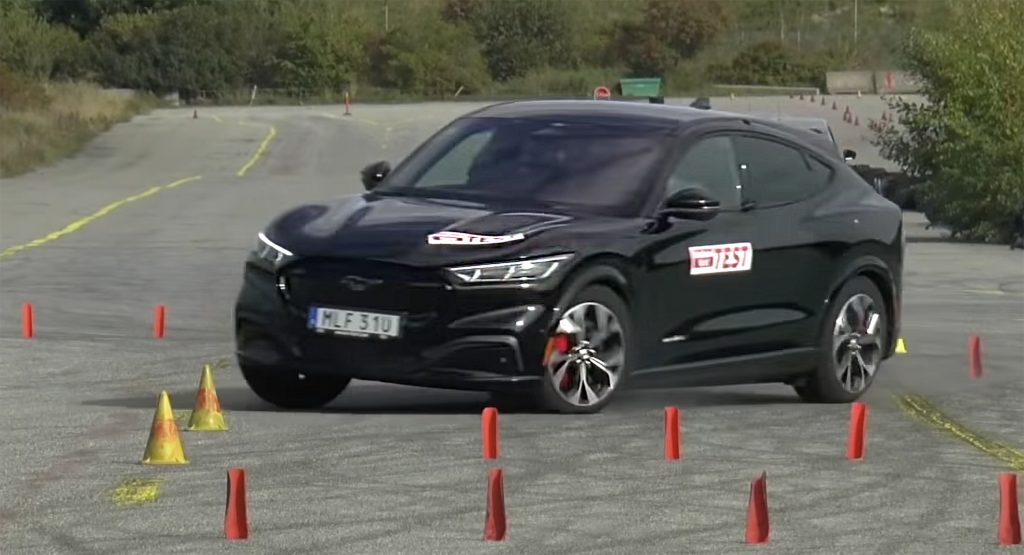In terms of weight, electric vehicles tend to be very heavy as compared to their ICE counterparts. However, most of that weight tends to be down very low in the vehicle, as batteries and motors are usually strategically located to make more room for passengers and cargo. The result of this is that even the most normal EVs, despite their weight, tend to have surprisingly decent handling.
That trait especially comes into play for things like the moose test, which is designed to simulate an evasive maneuver. So that begs the question: can the Mustang Mach-E, which not only benefits from a low center of gravity like other EVs, but is also marketed as worthy of bearing the name of Ford’s sports car, pass the dreaded test?
See Also: Here’s Why So Many New Cars Still Fail The Moose Test
The short answer is no. Seeing how other EVs like the Tesla Model Y, Mazda MX-30, and Fiat 500e did so well in the test thanks to their inherently low centers of gravity, it’s quite surprising that the Mach-E didn’t see the same fate. In the test, Ford’s crossover was said to be hard to handle at speeds of 40.5, 42.3, and 43.5 miles per hour (65, 68 and 70 km respectively) before outright failing the test at 44.7 miles per hour (72 km/h). The testers also noted that car’s ESC was slow to react to its rear end stepping out, leading to some instability at speed.
To see the Mach-E’s Moose Test failure for yourself, you can check it out in the video below.







